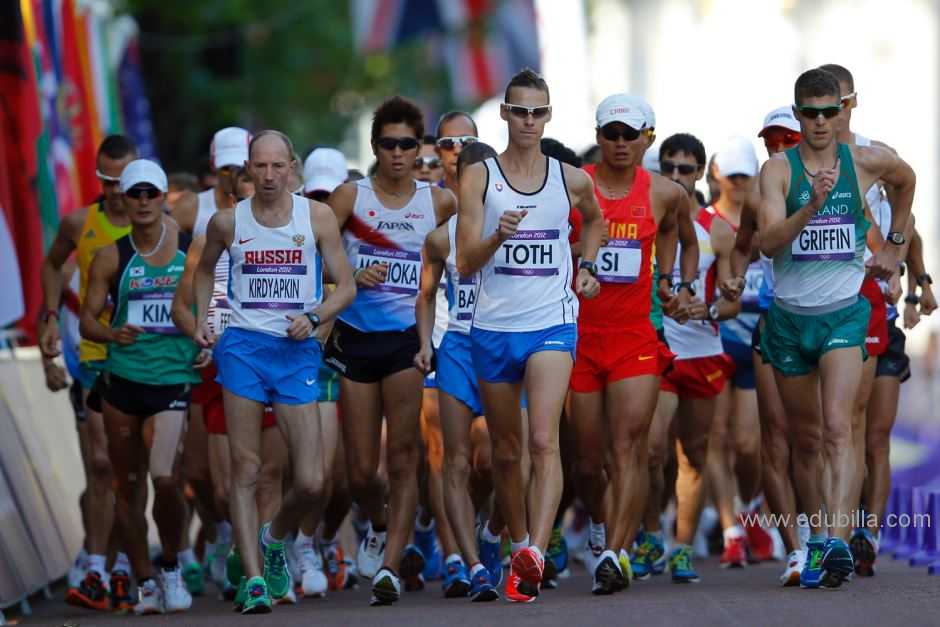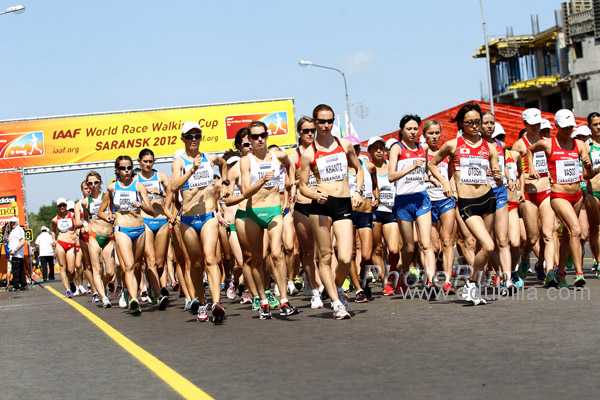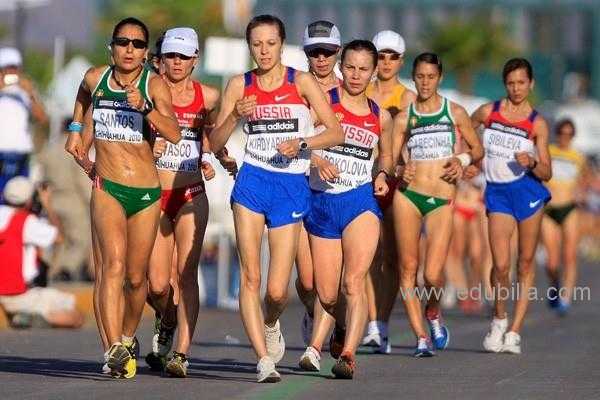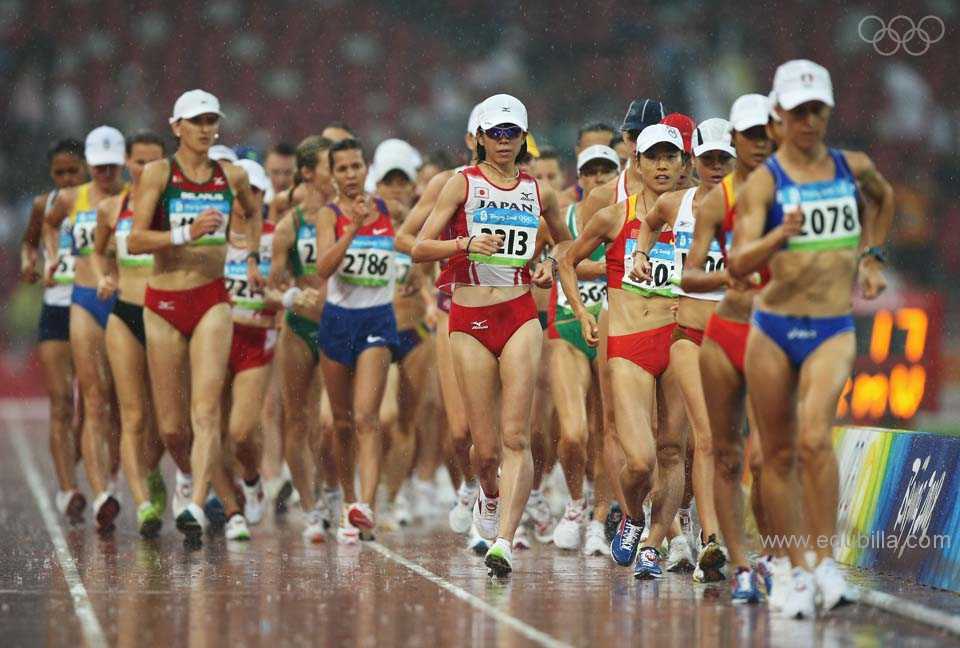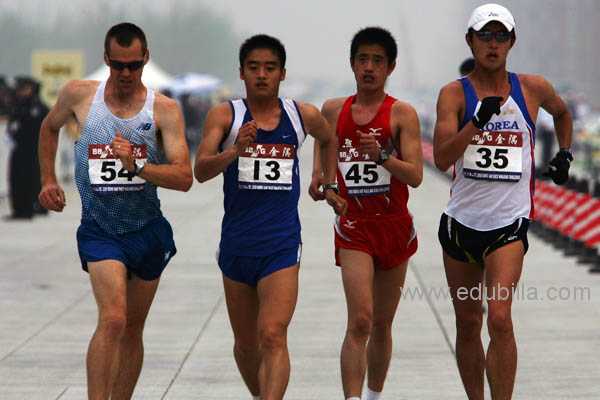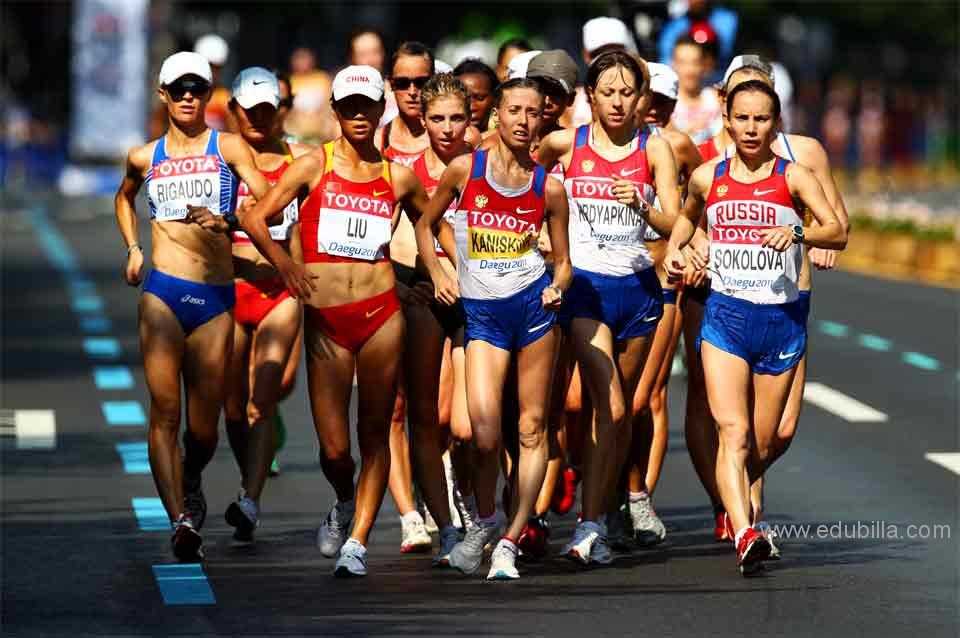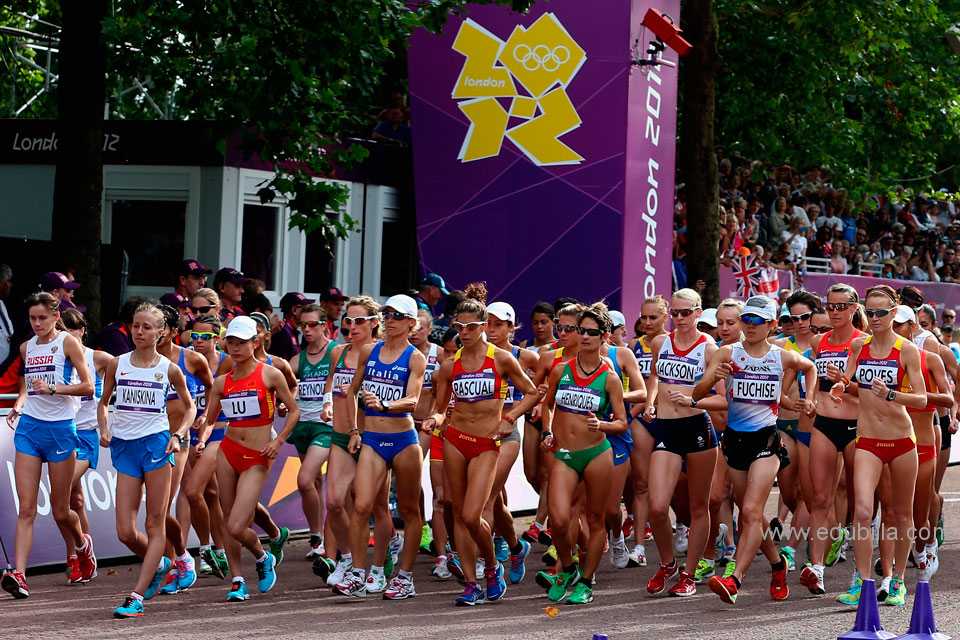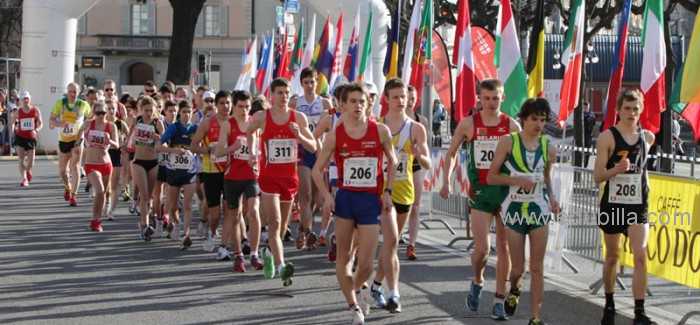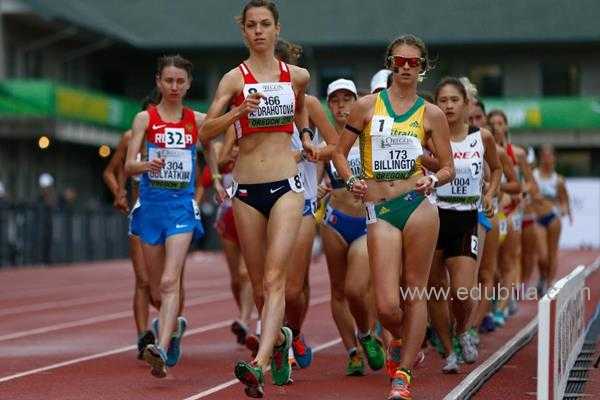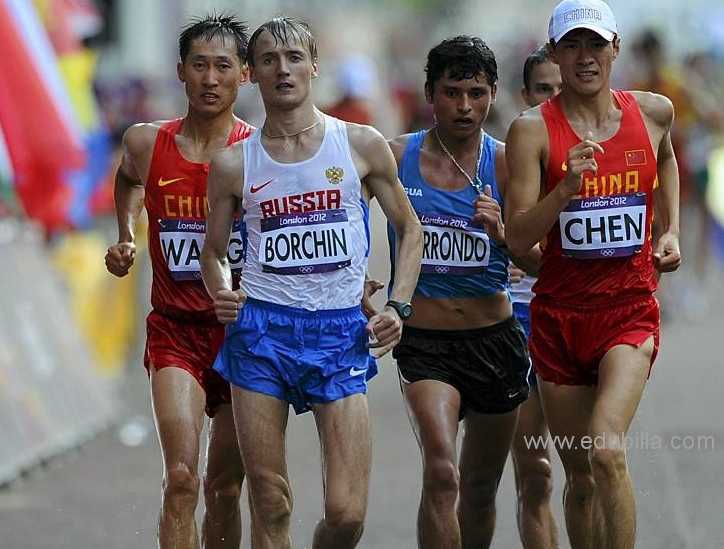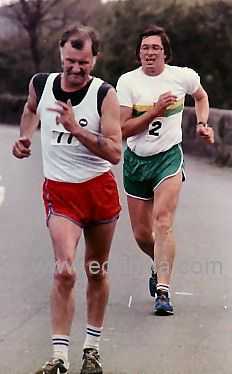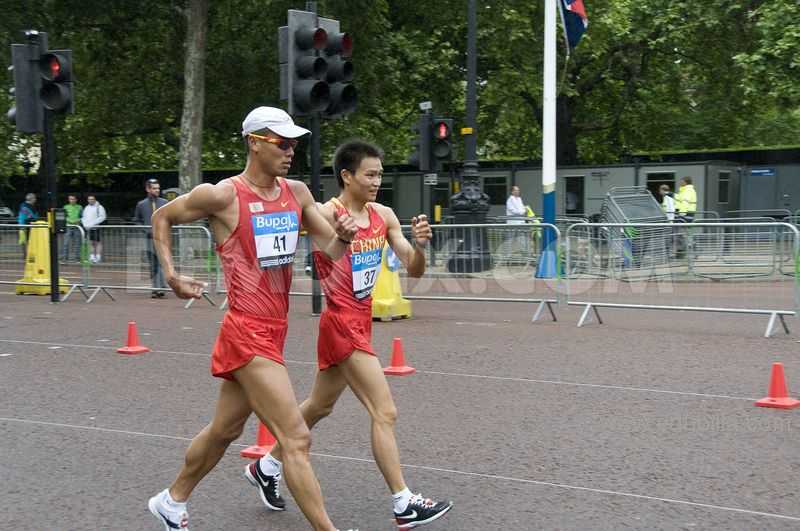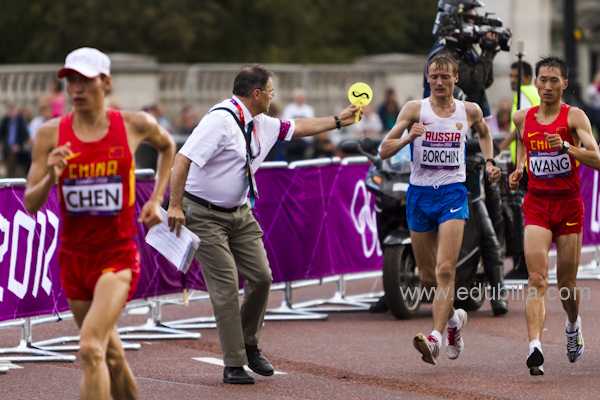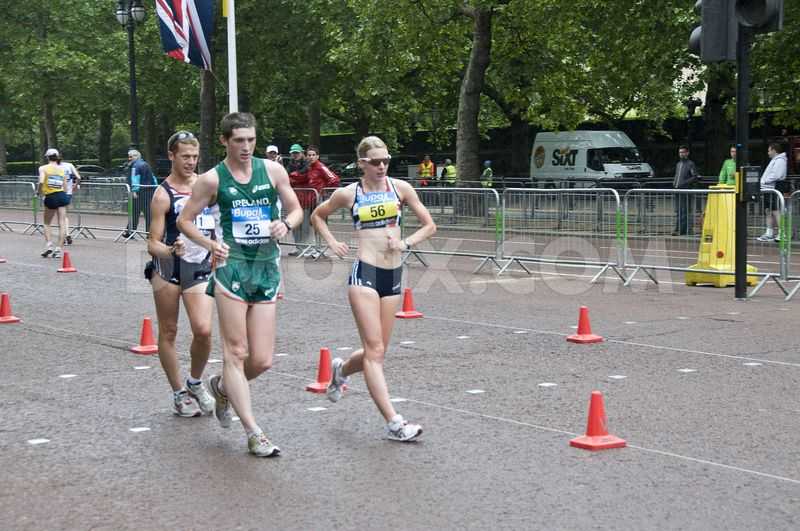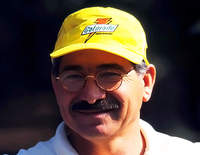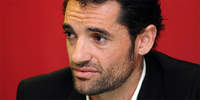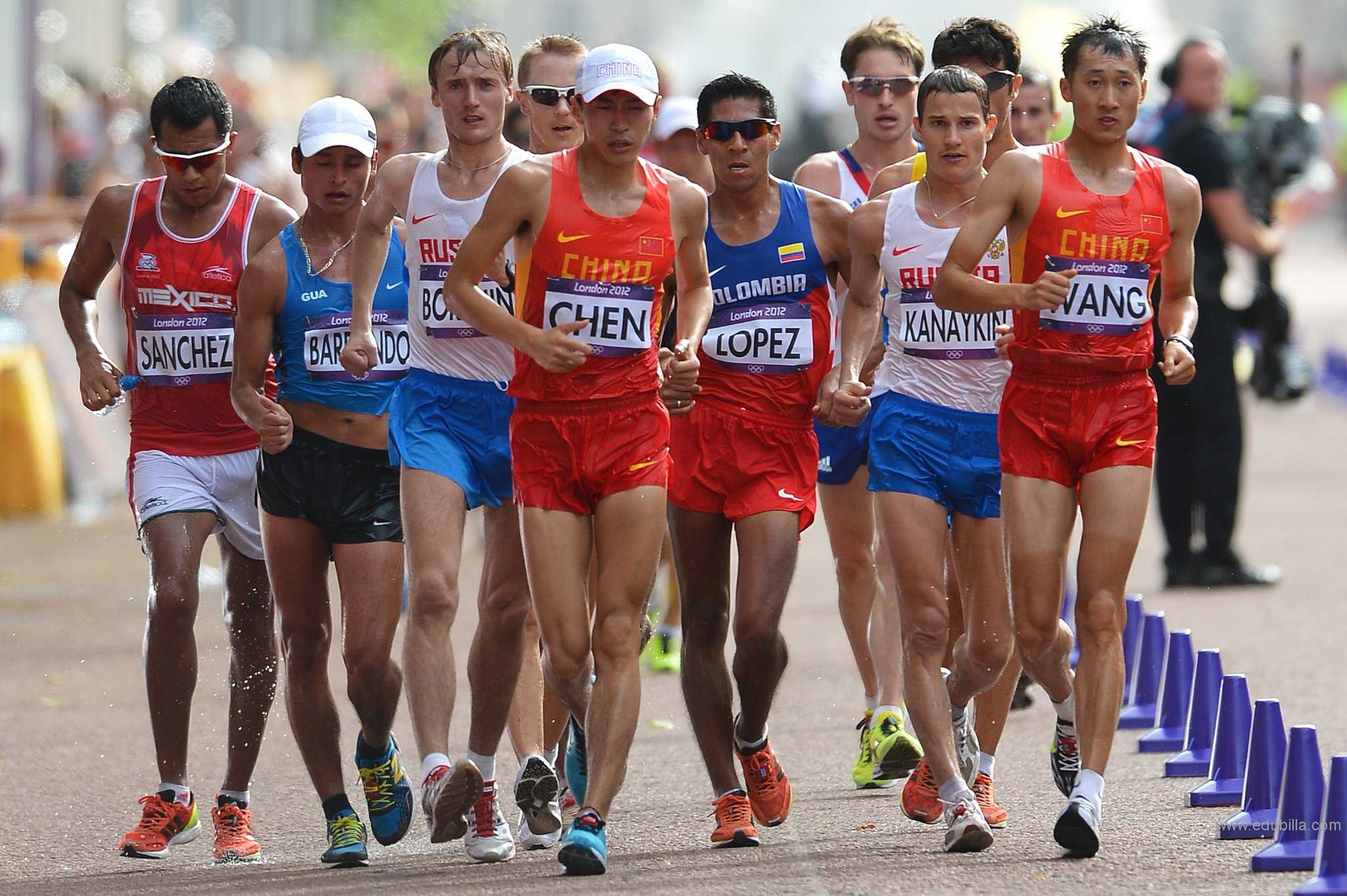
Overview Of Race walking
Racewalking, or race walking, is a long-distance discipline within the sport of athletics. Although it is a foot race, it is different from running in that one foot must appear to be in contact with the ground at all times. This is assessed by race judges, making it the most subjective of the disciplines in athletics. Typically held on either roads or on running tracks, common distances vary from 3000 metres (1.8 mi) up to 100 kilometres (62.1 mi).
The sport emerged from a British culture of long-distance competitive walking known as pedestrianism, which began to develop the ruleset that is the basis of the modern discipline around the mid-19th century. Watching people walk was America's favorite spectator sport in the late 1800s. Since the mid-20th century onwards, Russian and Chinese athletes have been among the most successful on the global stage, with Europe and parts of Latin America producing most of the remaining top level walkers.
Championships:
There are two racewalking distances contested at the Summer Olympics: the 20 kilometres race walk (men and women) and 50 kilometres race walk (men only). Both are held as road events. The biennial IAAF World Championships in Athletics also features the same three events. The IAAF World Race Walking Cup, first held in 1961, is a stand-alone global competition for the discipline and it has 10 kilometres race walks for junior athletes, in addition to the Olympic-standard events. The IAAF World Indoor Championships featured 5000 m and 3000 m race walk variations, but these were discontinued after 1993. Top level athletics championships and games typically feature 20 km racewalking events.
Beginnings:
Racewalking developed as one of the original track and field events of the first meeting of the English Amateur Athletics Association in 1880. The first racewalking codes came from an attempt to regulate rules for popular 19th century long distance competitive walking events, called Pedestrianism. Pedestrianism had developed, like footraces and horse racing, as a popular working class British and American pastime, and a venue for wagering. Walkers organised the first English amateur walking championship in 1866, which was won by John Chambers, and judged by the "fair heel and toe" rule. This rather vague code was the basis for the rules codified at the first Championships Meeting in 1880 of the Amateur Athletics Association in England, the birth of modern Athletics. With football (soccer), cricket, and other sports codified in the 19th century, the transition from professional Pedestrianism to amateur racewalking was, while relatively late, part of a process of regularisation occurring in most modern sports at this time.
World Race Walking Challenge:
Since 2003, the IAAF has organised an annual worldwide competition series in which elite athletes accumulate points for the right to compete in the IAAF Race Walking Challenge Final and to share over 200,000 USD of prize money. The series of televised events takes place in several countries each year including Mexico, Spain, Russia and China.
High school:
Racewalking is sometimes included in high school indoor and outdoor track meets, the rules often more relaxed. The distances walked tend to be relatively short, with the 1500 m being the most commonly held event. Racing also occurs at 3 km, 5 km and 10 km, with records kept and annual rankings published.
Game Rules
There are two rules that govern racewalking.
1)The first rule dictates that the athlete's back toe cannot leave the ground until the heel of the front foot has touched. Violation of this rule is known as loss of contact.
2)The second rule requires that the supporting leg must straighten from the point of contact with the ground and remain straightened until the body passes directly over it. These rules are judged by the unaided human eye. Athletes regularly lose contact for a few milliseconds per stride, which can be caught on film, but such a short flight phase is said to be undetectable to the human eye.
Athletes stay low to the ground by keeping their arms pumping low, close to their hips. If one sees a racewalker's shoulders rising, it may be a sign that the athlete is losing contact with the ground. What appears to be an exaggerated swivel to the hip is, in fact, a full rotation of the pelvis. Athletes aim to move the pelvis forward, and to minimize sideways motion in order to achieve maximum forward propulsion. Speed is achieved by stepping quickly with the aim of rapid turnover. This minimizes the risk of the feet leaving the ground. Strides are short and quick, with pushoff coming forward from the ball of the foot, again to minimize the risk of losing contact with the ground. World-class racewalkers (male and female) can average under four and five minutes per kilometre in a 20-km racewalk.
Distances:
Races have been walked at distances as short as 3 kilometres (1.9 mi)—at the 1920 Summer Olympics—and as long as 100 km (62.1 mi). Records are noted for the 50 miles (80.5 km); the men's world record for the 50-mile race walk is held by Israeli Shaul Ladany, through his race of 7:23:50 in 1972 in New Jersey, shattering the world mark that had stood since 1935.The modern Olympic events are the 20 km (12.4 mi) race walk (men and women) and 50 km (31 mi) race walk (men only).
Equipments Need For Race walking
Basic Racewalking Gear:
Shoes: "Footwear is the most important thing for racewalkers," says Jackinsky. "You can't land on your toes during racewalking. You land on your heels and roll all the way through."
To promote the heel-to-toe rolling motion, shoes should have a lower heel, which will allow the foot to come in contact with the ground quicker. This roll is crucial because racewalkers don't land on their toes.
Finding proper footwear can be tricky, which is why Jackinsky patented a midsole designed specifically for a walker's needs. Her brand, Reshod, replaces both the midsole and outsole of the shoes with a sole that enhances the rocking motion needed for opitmal form and speed.
Sweat-Wicking Socks: Walkers should avoid cotton socks. Cotton holds sweat close to the body allowing for the formation of blisters.
Comfortable Clothing: Choosing the right outfit is important. Fabrics should have sweat-wicking capabilities. Tight-fitting clothes can lead to chaffing. Jackinsky also suggests newbies invest in a pair of shorts that won't ride up.
Hydration Gear: Like other sports, racewalking works up a sweat and generates a thirst. For longer walks, Jackinsky recommends a hydration pack so walkers can carry their water with them.
Tunes: Like runners who have a favorite song or playlist that get their adrenaline pumping, Jackinsky recommends good music. Her go-to songs? Walk of Life by Dire Straits or Walking on Sunshine by Katrina & The Waves.
Accessories: Sunny days or summer temperatures might require sunglasses, hat or a visor. In cooler temperatures racewalkers might need gloves or warm layers.
What to Avoid
Jeans: Denim jeans don't offer breathability. In inclement weather, denim soaks up moisture becoming very heavy and could lead to chaffing.
Drab Colors or Black at Night: Visibility is important for light-night walks. Light-colored T-shirts or reflective vests are key ways to increase awareness and safety.
Weights: While strength training is an important aspect of fitness, Jackinsky doesn't recommend strapping ankle or wrist weights on before a walk. "Ankle or wrist weight throw off body balance," she says. "I don't recommend them."
History Of Race walking
Competitive walking appeared in England by the early 17th century as aristocrats wagered over whose footman was fastest. With sizable sums at stake, nobleman sought footmen with speed and stamina. The sport had few rules. Competitors were expected to use a "fair heel and toe" technique, trotting as necessary to ward off cramps, but not running.
Competition between footmen gave way, during the second half of the 18th century to men racing against time over long distances. "Pedestrians" (as the walkers were called) could win very large fees, and side bets were common. One of the more popular goals involved covering at least 100 miles in 24 hours.
In the early 1800s, "amateur racewalking" emerged at private sporting clubs in large cities. It was introduced into the Olympics in 1908 for men (in 1992 for women). The Olympics now include racewalks of 10K for women, and 20K and 50K for men. (At 31.1 miles, the men's 50K racewalk is the longest Olympic road racing event.)]
Race Walking Joins the Olympic Games:
Although by the early 1900s, race walking's popularity was on the decline, its popularity gained a little boost when it was added to the Olympic Games. Many people believe walking's induction to the Olympics occurred at the 1908 games; however, it was actually somewhat before that. In 1904, the race walk made its first appearance in the Olympics as an 880-yard racing event within the decathlon. It was also included in the 1906 Interim Olympic Games in Athens, but these games were never recognized as official.
Early Race Walking Rules:
The rules governing race walking in the early years, while worded differently, are surprisingly similar in intent to the rules of today. While I will not list all of them here, here is a sample of the most relevant rule pertaining to the action of the legs:
"As the foremost foot in taking a step touches the ground, the knee must not be bent. The heel must touch the ground first and the toe be the last portion of the foot to leave it. It is imperative that the heel of the foremost foot must touch the ground before the toe of the other foot ceases to have contact with it."
Modern Day Race Walking:
Today race walking is governed by a two part definition that separates it from running or walking.
Race walking is a progression of steps so taken that the walker makes contact with the ground so that no visible (to the human eye) loss of contact occurs.
The advancing leg must be straightened (i.e., not bent at the knee) from the moment of first contact with the ground until in the vertical upright position.
While there are many nuances to learning and perfecting race walking, if you follow the previous two part definition, you are a race walker. Following these rules will make you a faster and safer walker. If you perfect them, perhaps you could walk as fast as some of the best in the world.
Origin Of Race walking
The Earliest Years:
Competitive race walking's roots trace back as far as 2500 B.C., when Egyptian hieroglyphics recorded the first written account of a walking competition. Similar evidence indicates that walking competitions existed in early Greek civilizations. These early contests were loosely defined. Many were simply go-as-you-please, long distance events, with competitors alternating at will between running and walking. But the sport has evolved through several incarnations since these times.
The Gambling Invasion:
One of these evolutions involved betting large sums of money on walking contests. One famous example occurred in England in 1589. An English nobleman, Sir Robert Carey, wagered he could walk non-stop for 300 miles. Winning the bet, he set the stage for even greater walking feats. In 1608 he journeyed an amazing 2000 miles across Europe in 41 days.
The 18th Century:
While long-distance feats by individual walkers certainly captured the public's eye, it wasn't long before head-to-head races were scheduled. However, there was a change in players. Noblemen weren't battling it out for glory. Instead they enlisted gladiators to do their bidding. The early walkers of the 17th and 18th century were often a nobleman's footmen. Footmen had a lot of occupational training; they walked alongside a nobleman's carriage and often walked ahead to ready affairs in the town before the nobleman got there. Though a far cry from the 5K weekend shuffles we are accustomed to, these early events mark the beginning of regularly held walking competitions.
The sport of pedestrianism came full circle by the mid 18th century. The second half of the 18th century saw individual walkers battling the clock in the quest for glory and riches.
Governing Bodies
International Association of Athletics Federations(IAAF):
The International Association of Athletics Federations (IAAF) is the international governing body for the sport of athletics. It was founded on 17 July 1912 at its first congress in Stockholm, Sweden by representatives from 17 national athletics federations as the International Amateur Athletics Federation. Since October 1993, it has been headquartered in Monaco.
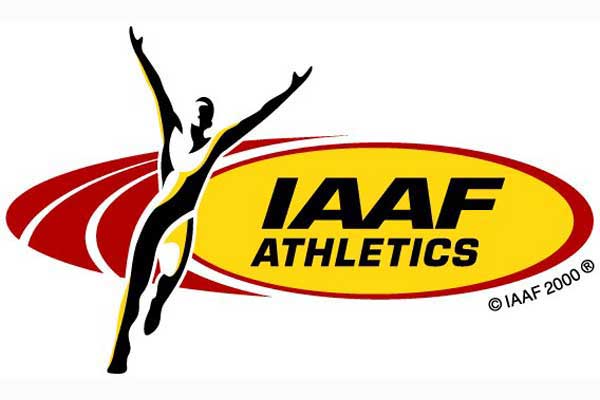
Beginning in 1982, the IAAF passed several amendments to its rules allowing athletes to receive compensation for participation in international athletics competitions. However, the IAAF retained the word "amateur" in its name until its 2001 Congress at which the IAAF's name was changed to its current form.
The IAAF's current president is Lamine Diack of Senegal. He became Acting President shortly after the death of the previous president, Primo Nebiolo of Italy in November 1999, and was elected President at the 2001 Congress.
Competitions:
World Athletics Series:
IAAF World Championships in Athletics
IAAF World Indoor Championships in Athletics
IAAF World Cross Country Championships
IAAF World Half Marathon Championships
IAAF World Junior Championships in Athletics
IAAF World Youth Championships in Athletics
IAAF World Race Walking Cup
IAAF World Marathon Cup
IAAF Continental Cup
IAAF World Relays
One-day events:
IAAF Diamond League
IAAF World Challenge Meetings
IAAF Indoor Permit Meetings
IAAF Label Road Races
IAAF Cross Country Permit Meetings
IAAF World Combined Events Challenge
IAAF World Race Walking Challenge
IAAF Road Race Label Events:
IAAF World Road Running Championships
IAAF World Road Relay Championships
IAAF World Athletics Tour
IAAF Golden League
IAAF Super Grand Prix
IAAF Grand Prix
IAAF Grand Prix Final
IAAF World Athletics Final
IAAF World Cross Challenge
To Visit IAAF Click Here
Awards Related To Race walking
USATF Awards:
Track & Field:
CC Jackson Awards
Combined Eventers Of The Year
Development Athletes
Gill Athletics Field Athlete Of The Year
Glenn Cunningham Award
Harrison Dillard Award
Heptathlon Award
Jesse Owens Award
Jim Thorpe Award
John Bennett Award
Male Thrower Of The Year
Masters Age Group Athletes
Masters Athletes of the Year
Youth Athlete of the Year
Long Distance Running:
Robert E. DeCelle, Jr., Award
Runner of the Year
Masters Road Runners of the Year
Masters Age Division Runners of the Year
Paul Spangler Award
Cross Country:
Athletes of the Year
Masters Harriers of the Year
Race Walking:
Captain Ron Zinn Memorial Award
Henry Laskau Award
Masters Race Walker of the Year Award
Masters Race Walker of the Year Award - Age Groups
Committee Awards
Volunteer Service Awards
Overall Federation Awards:
Charitable Race of the Year / Charitable Organization of the Year
Heliodoro & Patricia Rico Lifetime Achievement Award (Previously the Pacesetter Award)
Nike Coach of the Year
President's Award
The Robert Giegengack Award
Visa Humanitarian Award
Associations Committee:
Associations-of-the-Year
Gold-Silver-Bronze Awards
Horace Crow Jr. Award
Cross Country Running Council:
Cross Country Council Award of Merit
Doris Heritage Award
Men's Contributor of the Year
Masters Long Distance Running Committee:
Otto Essig Award
Masters Track & Field Committee:
Masters Administrator-of-the-Year
Men's Long Distance Running Committee:
H. Browning Ross Long Distance Running Merit Award
Scott Hamilton Award
Men's Track & Field Committee:
Distinguished Service Award
Mountain/Ultra/Trail Council:
MUT Running Council Contributor-of-the-Year
Officials Committee:
Andy Bakjian Award
Charles M. Ruter Award
Horace Crow Award
John R. Davis Memorial Humanitarian Award
Race Walking Committee:
Chairman's Award
Mike Riban Contributor Award
Women's Long Distance Running Committee:
Contributor-of-the-Year
Women's Track & Field Committee:
Joseph Robichaux Award
Youth Athletics Committee:
Bill Hargrove Award
Frank Sevigne Award
Sample Documents Of Race walking
-Andre Agassi

